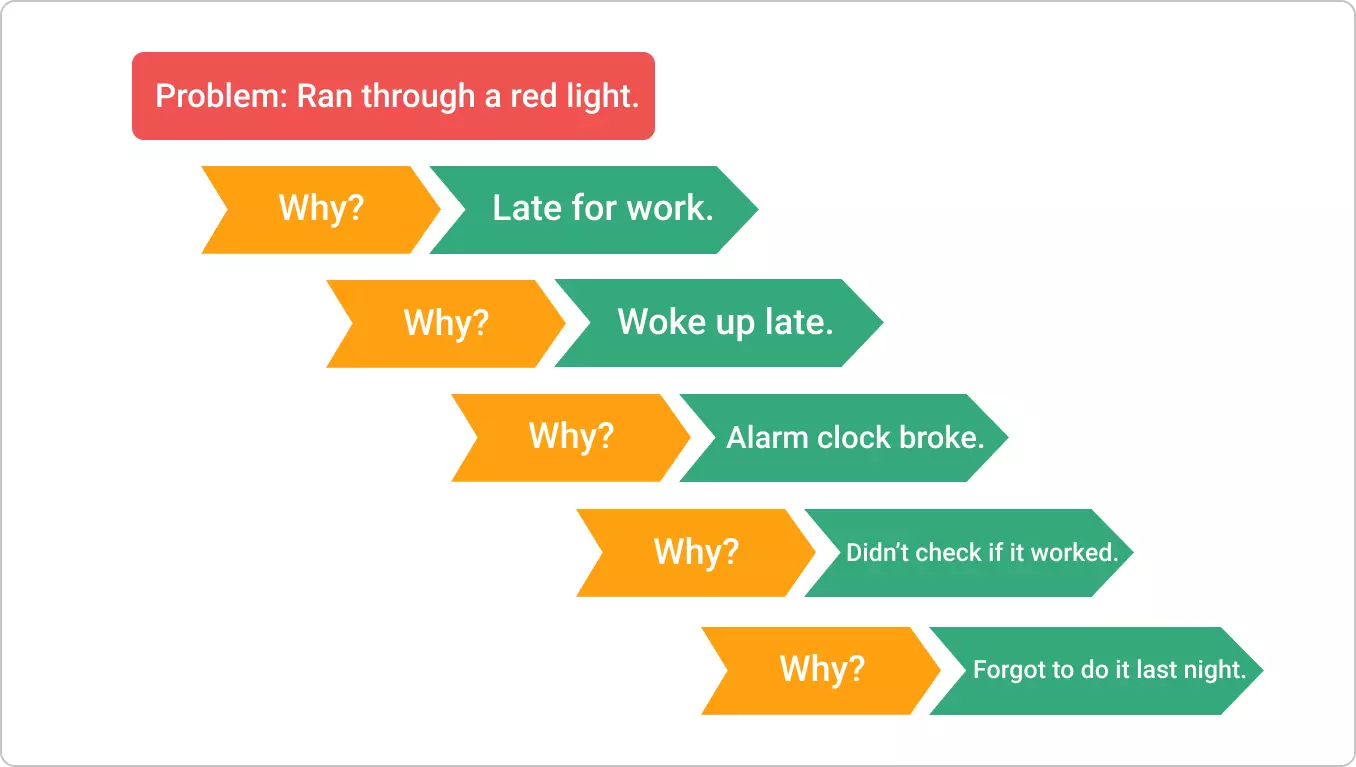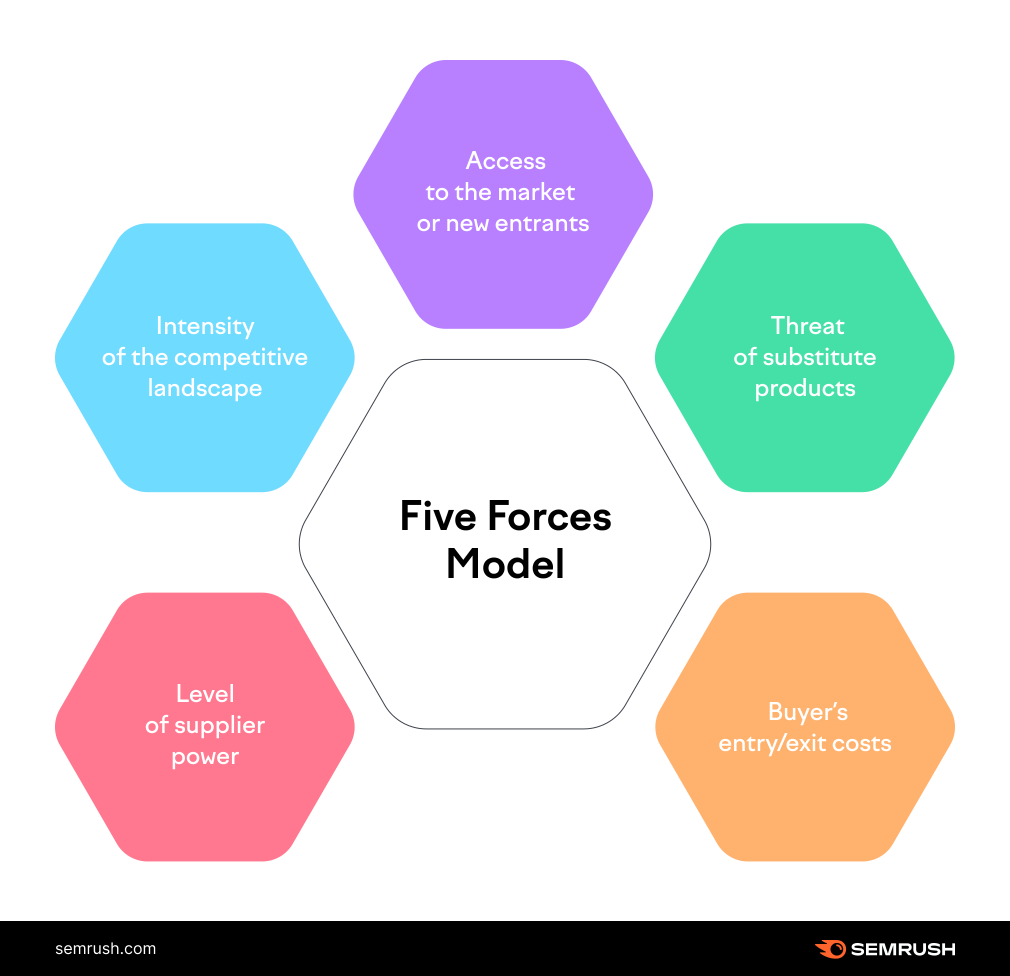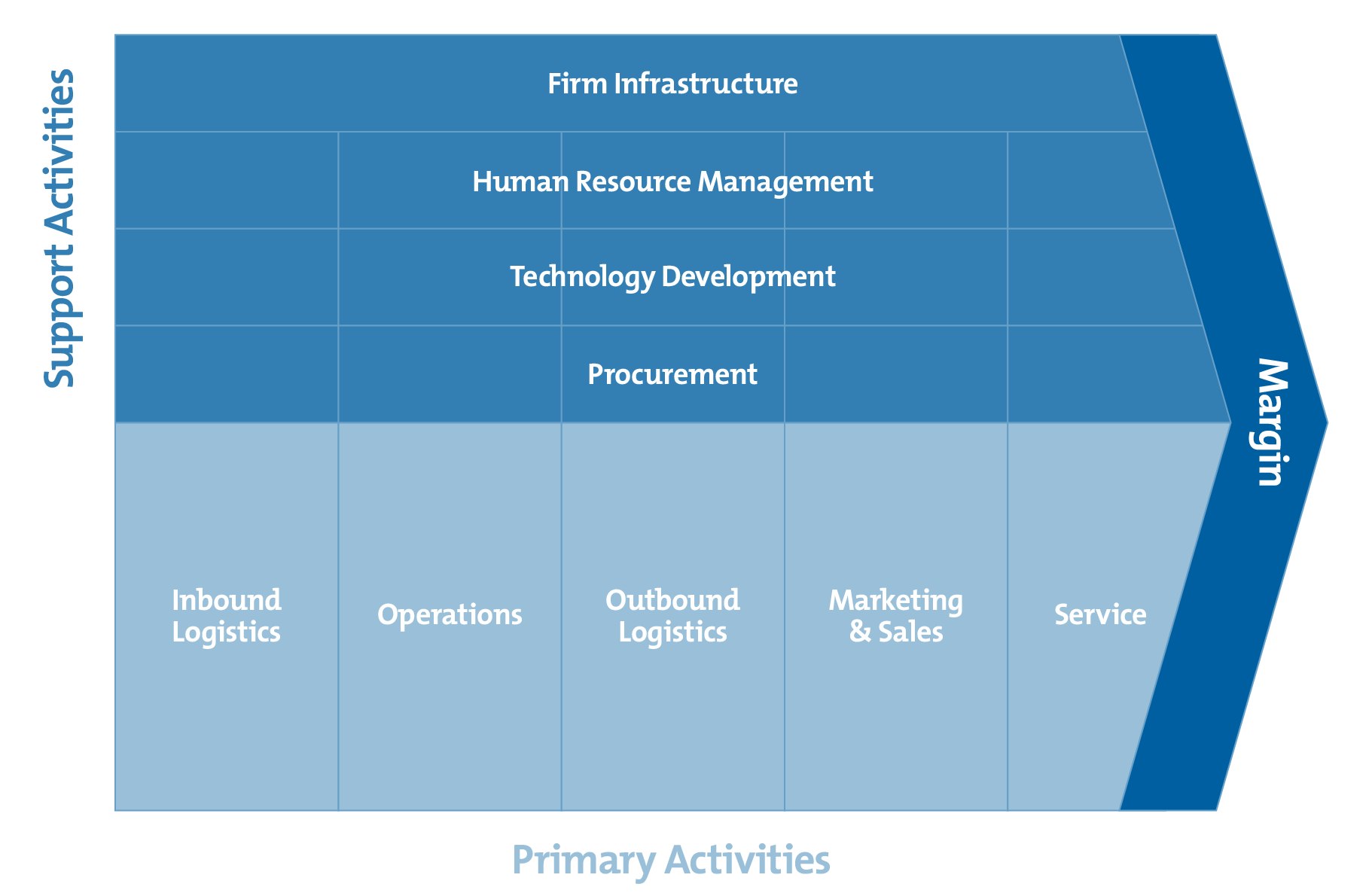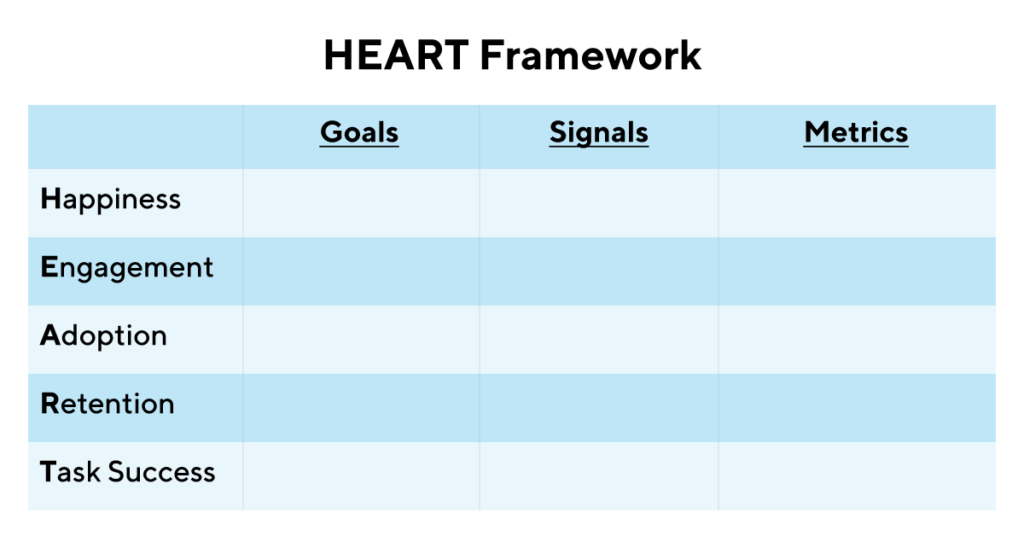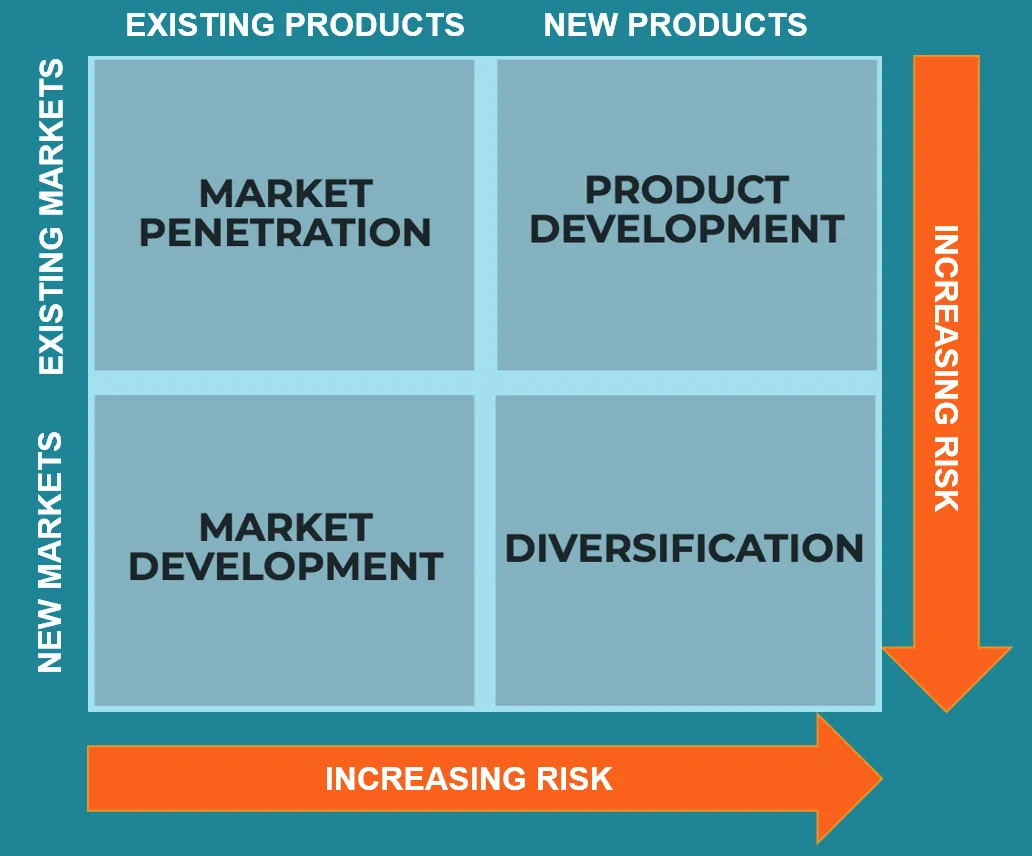Behind every successful business strategy consultant is a set of successful business frameworks. This simple fact is the reason “business frameworks” is such a wide-reaching concept. There are hundreds of business strategy frameworks and tools for the modern business strategy consultant.
Where to start? In this post, we’ll keep it simple. Because at the end of the day, you get out what you put in as a business strategy consultant. That is, when applied with rigor and consistency, a handful of business strategy frameworks is all you need. We cover six business strategy frameworks in this post:
1) Competitor Analysis
2) Five Whys
3) Porter’s Five Forces
4) Value Chain Analysis
5) HEART Framework
6) Ansoff Matrix
Any of these six frameworks are worthy of making an appearance in your career as a business strategy consultant. And for some, picking a few from this list might be all you need to pass your job interviews, and eventually, impress your clients.
If you want to go deeper on strategy frameworks and tools, we recommend that you look into our online business class – the Business Intensive.
What Business Frameworks Do Business Strategy Consultants Use?
Business frameworks help a business strategy consultant think through key decisions around product, markets, resource allocation, competitive advantages, and more. From these frameworks and tools, a consultant can create a plan or outline in order to help reach company goals.
Business strategies can vary widely in scope, but the common denominator is that they help a company understand where it needs to go and how it plans to get there.
Why Are Business Strategy Frameworks So Critical?
Think of a business strategy framework as a type of roadmap for an organization’s success. Without one, you wouldn’t know where to go! Strategy frameworks and tools are a critical part of planning, discovering business opportunities, exposing company weaknesses, and ultimately determining how to make the most of a company’s potential.
Who Should Develop Strategy Frameworks and Tools?
Business strategy frameworks are useful for business leaders and managers of all levels. Most successful companies develop an overarching business strategy that guides the direction of the company as a whole. Business strategy consultants are likely to develop this high-level strategy, in coordination with upper management and C-suite executives.
On a more granular level, business strategy consultants can use business strategy frameworks to steer their own teams and departments in ways that align with the overarching company strategy. To this end, paying attention to business strategy is relevant for any managers making key decisions that directly impact business outcomes.
6 Business Strategy Frameworks to Get You Started
Once again, navigating “best practices” around developing a business strategy can be a bit of a rat race. For example, one could find a dozen different ways to conduct a competitor analysis, and the same is true for most frameworks. Our goal here is to give you a launchpad to start your own business strategy consultant career with the guidance of some of our favorite business frameworks.
Strategy Framework 1: Competitor Analysis
Competitor Analysis via Moqups
A competitor analysis is a fantastic place to start developing a business strategy, whether you’re just launching a company or attempting to reevaluate an existing one. A competitor analysis requires one to examine the market and the direct and/or indirect competitors in the space.
Through a competitor analysis, business leaders can learn how competitors are developing their own products, how they are selling those products, and where the market is under or over-served. From there, one might strategize around developing new products, sunsetting existing ones, pivoting opportunities, marketing & sales ideas, and more. The potential discoveries to be made in a competitor analysis are nearly endless.
Strategy Framework 2: Five Whys
The 5 Whys via Kanbanzie
Five Whys is a problem solving and root cause analysis tool that can be applied to any number of situations. The idea is simple: Ask “Why?” five times to get deeper into the root cause of a problem. Here’s what Five Whys might look like in action:
Problem: NewCo missed its sales goal by 30% in Q2.
Five Whys:
1) Why did NewCo miss its sales goal by 30% in Q2? Enterprise sales dropped substantially
2) Why did enterprise sales drop substantially? The sales team didn’t convert leads effectively.
3) Why didn’t the sales team convert leads successfully? NewCo’s new pricing model confused the Account Executives.
4) Why did NewCo’s new pricing model confuse the Account Executives? There was no formal training on how to sell with the new pricing model.
5) Why was there no formal training on how to sell with the new pricing model?Sales executives prioritized speed of pricing rollout over training
So… Where did we end up? NewCo missed its sales goal by 30%, and the root cause was that the sales team was poorly equipped to sell NewCo’s enterprise offering. Through asking the Five Whys, the solution becomes quite clear: The sales team needs to be properly trained on how to navigate and sell with the new pricing model for enterprise deals.
Strategy Framework 3: Porter’s Five Forces
Porter’s 5 Forces via Semrush
Porter’s Five Forces is a framework developed by Harvard Business School professor, Michael E. Porter. The framework maps out the five “forces” that exist in every market or industry, and therefore, every company or business. Analyzing Porter’s Five Forces as they relate to your company is a critical step in understanding market attractiveness, potential profitability, competition levels, and logistical limitations. The five forces are:
1) Threat of substitutes
2) Threat of new entrants
3) Power of suppliers
4) Power of buyers
5) Competition
Any one of these five forces can be the source of major advantages or disadvantages for companies. Take, for example, the “power of suppliers” force. Vertically integrated companies that have managed to cut suppliers out entirely are some of the world’s most advantaged companies. Think Ikea or Target, both of which develop and manage their own branded products, giving them total control over the supply chain. According to Porter’s Five Forces, these companies may not be totally safe from new substitutes or new market entrants, but they’ve built a huge lead amongst the competition by focusing on one of the other forces.
Strategy Framework 4: Value Chain Analysis
Value Chain Analysis via Mind Tools
Value Chain Analysis is a great follow up to Porter’s Five Forces, because, well, it’s another Michael Porter framework! This one can get a bit more complex, but it provides a great contrast to the Five Forces, as it’s more introspective in nature (it focuses more on the company as opposed to the market).
A value chain is a mapping of all the steps, activities, and resources that go into the process of creating something of value, like a product or service. In simple terms, the point of the Value Chain Analysis is to evaluate the efficiency of the value chain, with the goal of finding ways to more cheaply produce the product or service, thus increasing the profit margin.
A value chain is comprised of various “activities” which are required for the production and sustainment of most products. Example activities include Operations, Procurement, Marketing & Sales, HR Management, and more. While some “activities” are product-focused (Sales & Marketing), others are personnel focused, like HR Management – both of which are critical for the execution of a successful product. For more on this framework, this Investopedia article on Value Chain is a good place to start.
Strategy Framework 5: HEART Framework
HEART Framework via Product Plan
Google’s HEART Framework is a User-Experience (UX) focused framework, designed to help product leaders understand key user metrics related to their products. The acronym stands for:
• Happiness
• Engagement
• Adoption
• Retention
• Task success
In a nutshell, HEART provides a framework to understand some of the most critical product metrics. By analyzing the five metrics in HEART, product leaders can learn what aspects of the User Experience are working, and what aspects need improvement. For example, high adoption but low retention could suggest the product itself needs to improve to better keep users engaged. Or high retention and low adoption might suggest there is no problem with the product itself, but rather the reach of the company’s marketing efforts.
Strategy Framework 6: Ansoff Matrix
Ansoff Matrix via Corporate Finance Institute
The Ansoff Matrix is a strategic planning framework used to analyze and plan your growth strategy. The four quadrants in the matrix represent four different expansion strategies a company can take:
• Market Penetration
• Product Development
• Market Development
• Diversification
Each of these four expansion strategies come with their own levels of risk. For example, market penetration is least risky, as it deals with further growing market share in a market where a company or its products already exist. On the other end of the spectrum, diversification is most risky, as it requires a company to pursue an entirely new market. Product development and market development are both moderately risky, as they do require new development efforts, but they don’t require a company to learn an entirely foreign market.
How to Learn Strategy Frameworks and Tools
We’ve briefly covered some of the best strategy frameworks available in today’s business world. But for the rising business strategy consultant looking to constantly learn new strategies and get some real-world experience putting them to use, that’s not enough!
Enter a mini-MBA course like brunchwork’s Business Intensive. For those who want to actually develop and implement business strategies in real-world settings, Business Intensive is your answer.
Business Intensive at a Glance
• Length: 2 months
• Format: Online and in-person
• Cost: Starting at $1,499
What You’ll Learn in Business Intensive
This two month program teaches eight core business skills that require students to put business strategies to use. Example projects include:
• Refining and testing a business concept
• Creating a high-caliber presentation
• Analyzing financial reports
• Developing a business strategy
• Crafting a marketing and sales plan
• Conducting user interviews
• Building a no code website
Weekly guest speakers include high profile business leaders, like former Presidential Candidate Andrew Yang, PayPal Founding COO David Sacks, Ellevest Co-founder and CEO Sallie Krawcheck, and Peloton Co-founder, Graham Stanton.
For those seeking a professional development experience that emphasizes real-world use of today’s leading business strategies, Business Intensive is a great choice.



